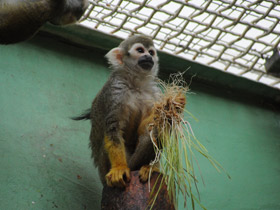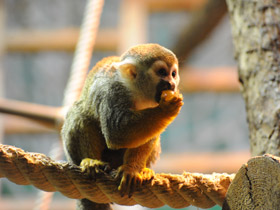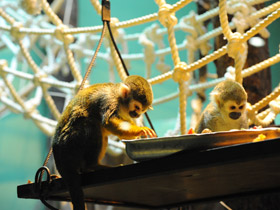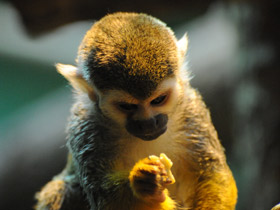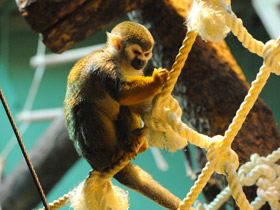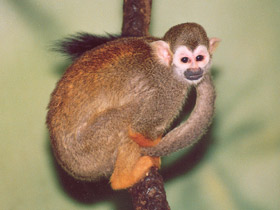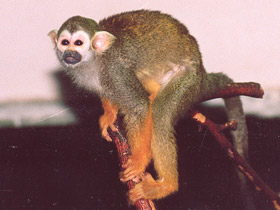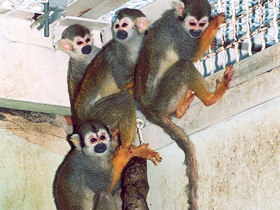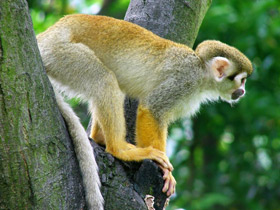The Guianan squirrel monkey (Saimiri sciureus)
The Guianan squirrel monkey (Saimiri sciureus) is a species of squirrel monkey from Guiana, Venezuela and Brazil. S. sciureus formerly applied to Humboldt's squirrel monkey and Collins' squirrel monkey, but genetic research in 2009 and 2015 revealed that these are distinct species.
Taxonomy
Several now-separate squirrel monkey species were formerly considered a single species, Saimiri sciureus, generally known as the common squirrel monkey, with a wide range in the northern half of South America. A 2009 genetic study by Carretero-Pinzón, et al indicated Humboldt's squirrel monkey, S. cassiquiarensis, from Colombia, Peru and Ecuador, which had been considered a subspecies of S. sciureus, was actually more closely related to other squirrel monkey species. A 2015 genetic study by Lynch Alfaro, et al revealed that Collins' squirrel monkey, S. collinsi, from northeastern Brazil, which had also been considered a subspecies of S. sciureus, should also be treated as a separate species. This left S. sciureus to apply to the squirrel monkeys in northern Brazil and the Guianas. Lynch Alfaro's study also revealed that despite the gap in their ranges, the squirrel monkey species most closely related to the Guianan squirrel monkey is the Central American squirrel monkey of Costa Rica and Panama.
Appearance and peculiarities
Saimiri sciureus is a neotropical primate belonging to the family Cebidae.
They belong to the same family as capuchins. These small and very agile monkeys are quite common in Central and South America. Unlike capuchins, the tail of the Saimiri sciureus does not grip, but serves as a balancer when moving and wraps around the body when sleeping.
Social behaviour and reproduction
Saimiri sciureus live in flocks of varying numbers: from 10 to 100 (and even up to several hundred in the Amazon), although groups of 30-40 animals are the most common. The core of these groups consists of females with young, while males join them only for a few months during the breeding season and then remain separated on the periphery of the territory.
No permanent pairs are formed with Saimiri sciureus. Pregnancy lasts about 25 weeks, and a calf is usually born, which immediately clings to the wool of the mother's belly. Females and calves without offspring from previous years voluntarily care for the calf while the mother eats her own food. The female carries the calf on her back for about a month. By the end of the first year, the calves spend most of their time with their mates and become almost independent of their mother.

















